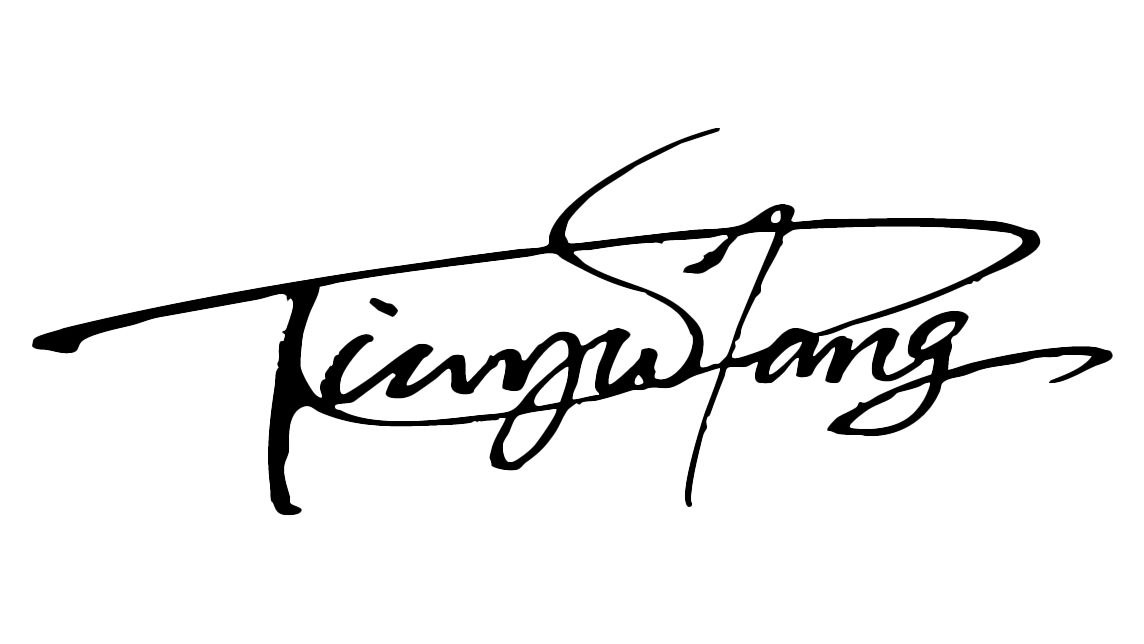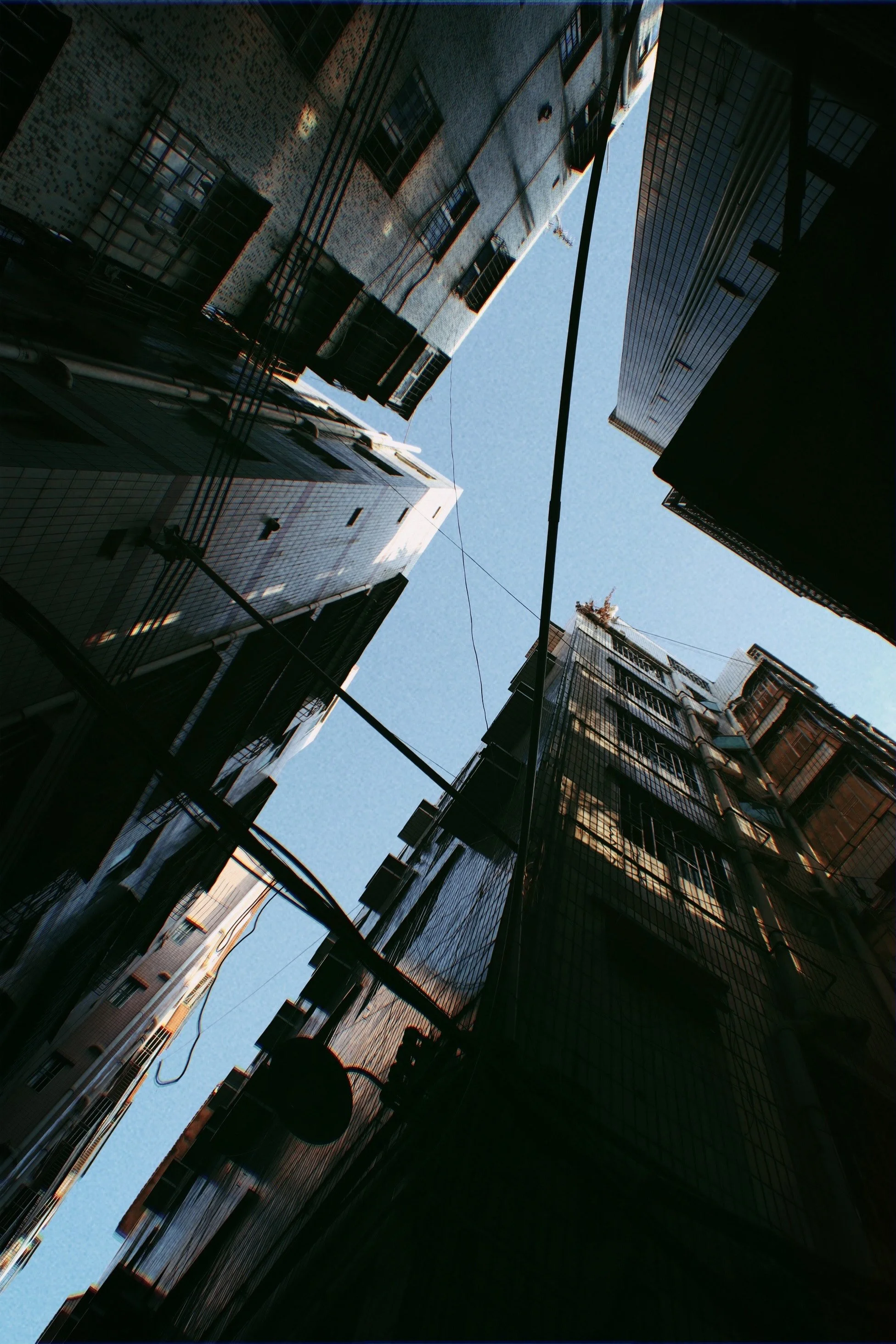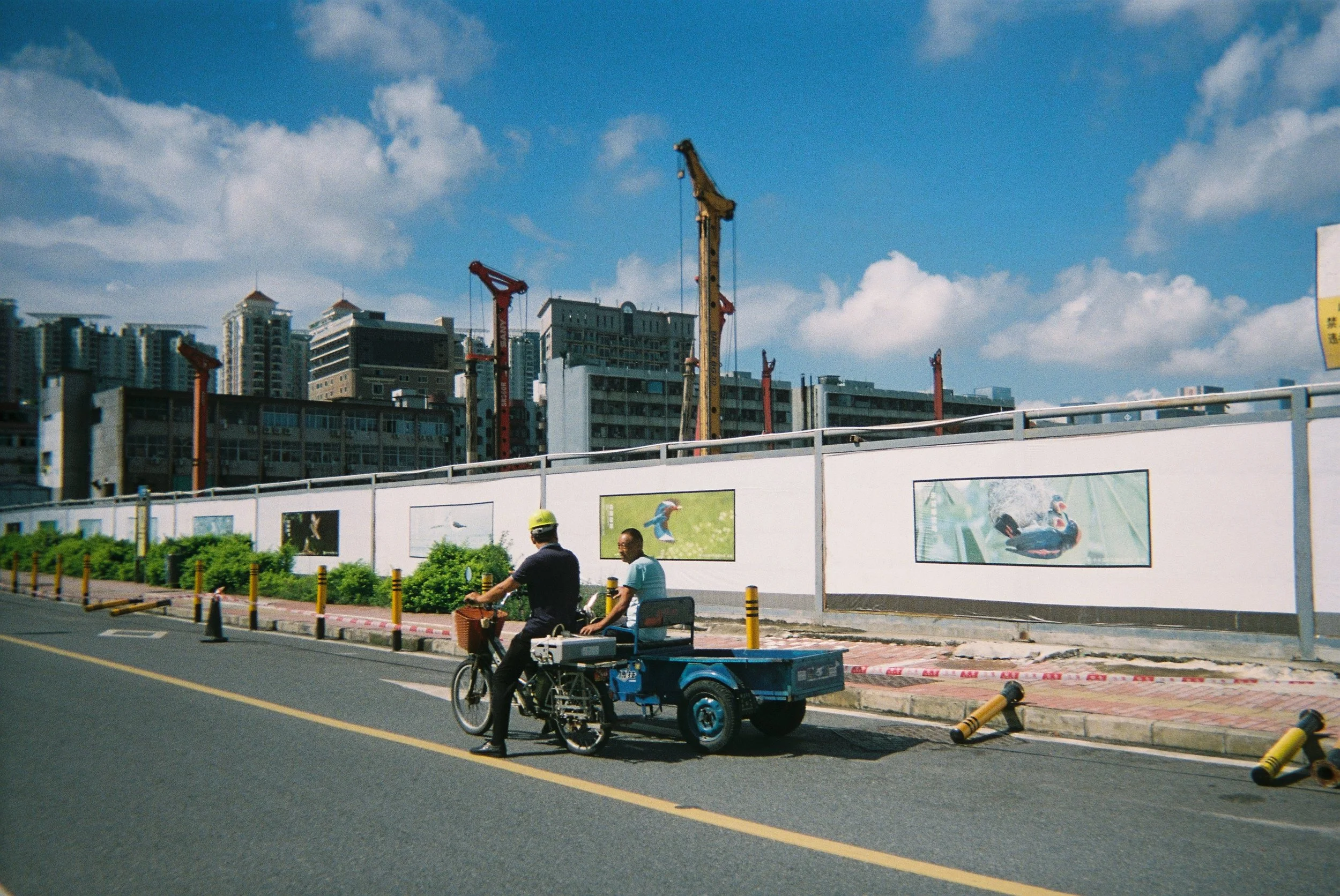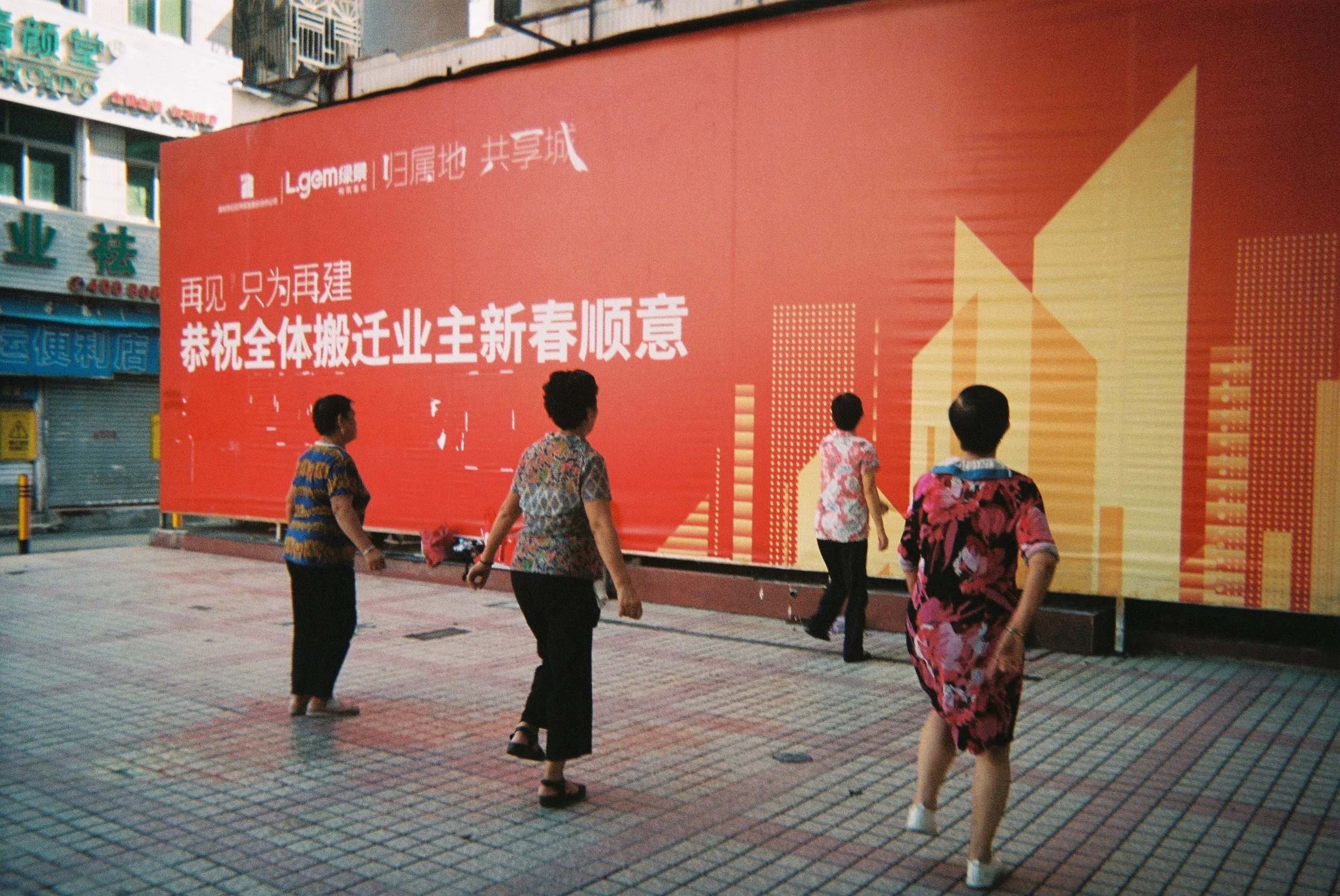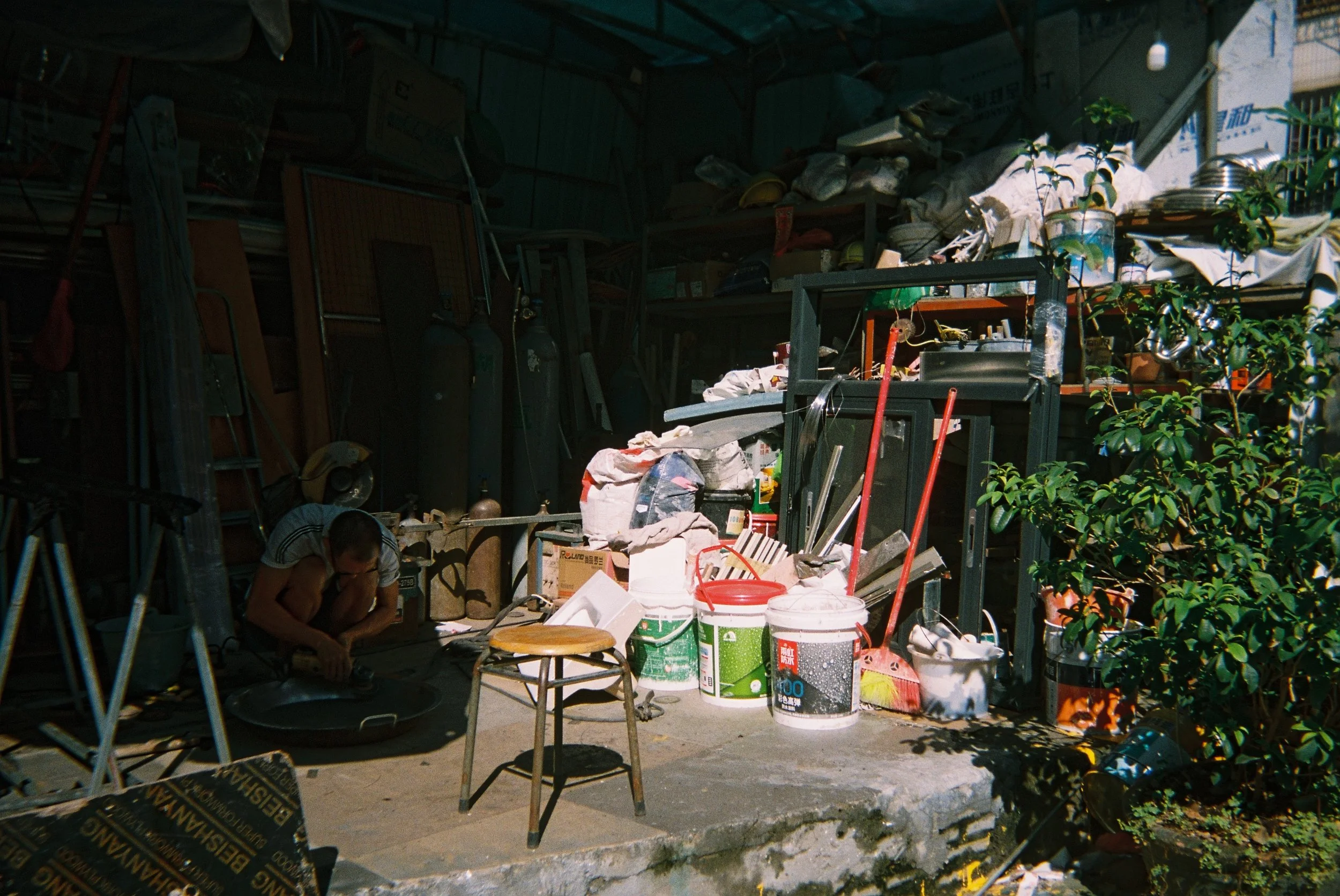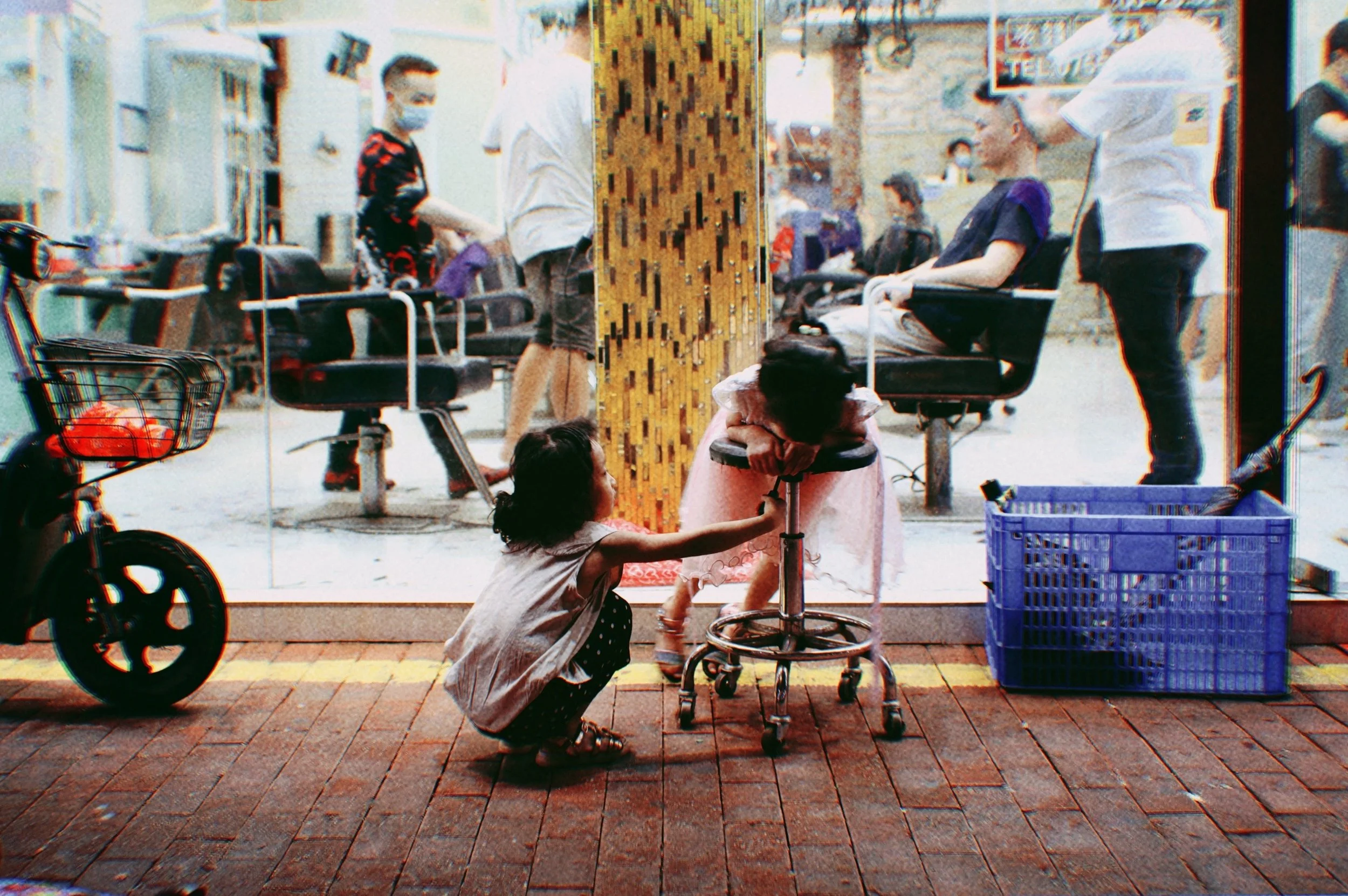Bai Shi Zhou 白石洲
Handshake Building 握手楼
Film, 7 × 5 in, 2020/10/30
This is the view when any resident of Bai Shi Zhou looks up, and likewise the view when any inhabitant of a Shenzhen urban village raises their head. In this work, I attempt to present the subjective perspective of Bai Shi Zhou residents, using film as an analogy for human visual memory.
Communication 交流
Film, 6 × 4 in, 2020/10/30
Direct Cinema, which emerged in the United States in the 1960s, serves as the conceptual foundation for this work: the handheld camera remains in a constant state of creative tension, observing without intervention, and recording reality as it unfolds.
The same conversation, the same posture, the same two figures could also appear by the fields of a rural village or along a roadside. Yet the countryside, too, is undergoing profound transformations in its landscapes. This scene becomes an overlap of countless similar moments across contemporary China.
Red 红色
Film, 6 × 4 in, 2020/10/30
Red is a fundamental tone in Chinese life and one of the most prevalent color languages in Chinese cities. This work regards the red demolition propaganda board and the open square for group dancing as both theatrical stage and backdrop, reflecting a fleeting scene of drama that emerges within the flow of everyday life.
Residue 残余
Film, 6 × 4 in, 2020/10/30
Amid the clutter of tools, paint buckets, and discarded materials, a man crouches to work in the dim light of a workshop corner. This scene captures the fragile coexistence of labor and livelihood within China’s urban villages, where spaces of survival are compressed into every possible corner. The image reflects not only the resilience of individuals who carve out their living in narrow margins, but also the improvisational theater of daily life staged against backdrops of disorder and necessity.
Photo Studio 照相馆
Film, 6 × 4 in, 2020/10/30
On the wall of the photo studio hangs a large, standardized portrait of a “happy family,” visible not only to customers who come for pictures but also to passersby. Life is governed by a set of standards, and there are various ways through which these standards are disseminated. The photo studio thus becomes both a site of media production and a medium itself. Yet at this very moment, the studio’s owner has fallen into a weary sleep.
Take A Break 休憩
Film, 6 × 4 in, 2020/10/30
I value storytelling above all else in my photographic work. Within a still image, I hope viewers can sense both narrative and life in motion—feel the passage of time between the moment just before and the moment just after the frame.
The subject of this work is a vendor in an old market in Baishizhou. With her goods sold out, she looks at her phone, savoring a brief moment of leisure. The film amplifies a greenish light within the scene, adding a subtle unease and a surreal undertone to the story. One month later, the entire market was demolished.
Homesick 归乡
Film, 6 × 4 in, 2020/10/30
This work was photographed with a Kodak disposable film camera. The limitations of this inexpensive medium required that the subject be captured within a range of 1.2–4 meters. For someone accustomed to using digital cameras with telephoto lenses, this posed a significant challenge—especially when confronting this story about returning home, where I seemed unable to maintain a “safe” physical distance. In the entire image, the figures appear immersed in a “blue” melancholy.
Kids outside the Barbershop
理发店的孩子
Film, 6 × 4 in, 2020/10/30
The adults inside were once the children outside. This work attempts to convey a sense of spatial relationships: the companionship between two children, and within the depth of space, the distance maintained among strangers inside a barbershop. The central wall in the frame completely blocks the interior space, while the view through the glass window reveals a horizontal axis. Set against the vertical axis, this contrast creates an intriguing form of expression.
